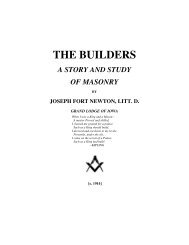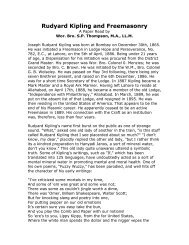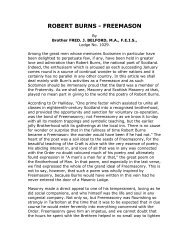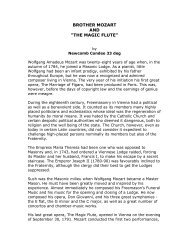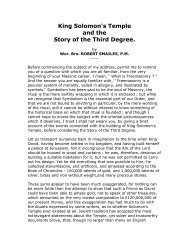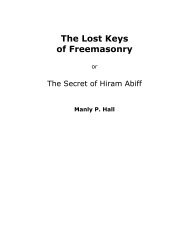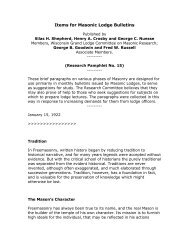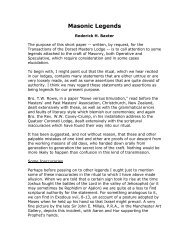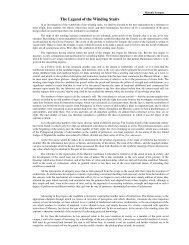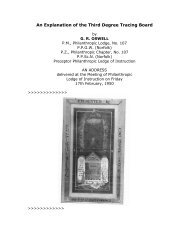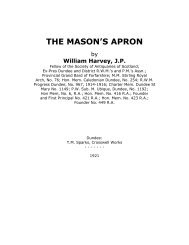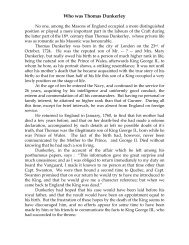The Albury MS. THE AMALGAMATED GUILD OF ... - RoseCroix.org.au
The Albury MS. THE AMALGAMATED GUILD OF ... - RoseCroix.org.au
The Albury MS. THE AMALGAMATED GUILD OF ... - RoseCroix.org.au
You also want an ePaper? Increase the reach of your titles
YUMPU automatically turns print PDFs into web optimized ePapers that Google loves.
and this is the same abroad, except that non-craftsmen are<br />
inadmissible. A doctor of laws, for instance, is sworn a member of the<br />
Guild or College of Advocates in Hamburg,[ <strong>The</strong> English Guilds of<br />
Advocates never sought nor accepted a charter, preferring to remain<br />
voluntary societies untrammelled by State influence.] either by<br />
inheritance, if son of a citizen, on production of his diploma, or by<br />
redemption, if son of a non-citizen, but would not be eligible did he not<br />
belong to some profession or handicraft. A doctor of law, however,<br />
takes precedence as a member of a profession as distinguished from a<br />
handicraft over those sworn in with him.<br />
<strong>The</strong> great employers of labour in the middle ages were the territorial<br />
nobility, who by their tenure belonged exclusively to the profession of<br />
arms ; the ecclesiastics, who held large territorial possessions ; and, in<br />
the cities, the mercantile class. To the former two categories belonged<br />
the two chivalric orders of the Temple and Hospital, who, noble by<br />
birth or profession, and as lay monks, quasi ecclesiastical, partook of<br />
the characteristics of both, and, rapidly increasing in territorial wealth,<br />
necessarily employed large numbers of skilled workmen and artisans<br />
for the construction and repair of the various farm and other buildings<br />
on their estates, and the erection of chapels and conventual buildings,<br />
termed preceptory houses, in which were placed veterans or persons<br />
possessed of commercial knowledge, for the management of the<br />
estates and collection of the revenues as implied by the term<br />
preceptor.[ Praeceptor, receiver percevoir les revenus.]<br />
In order to perform these duties, the guild of the building trade<br />
travelled from place to place as necessity required, working for the<br />
territorial nobility, whether lay or ecclesiastic, accounting in a great<br />
measure for the similarity which may be found in the style of<br />
especially churches, in certain districts of England, leading to the<br />
evident conclusion that they were constructed by the same gang of<br />
workmen; but it by no means follows that those by whom they were<br />
employed belonged to the guild; indeed, the presumption is clearly<br />
opposed to such a view, since the profession of arms was a noble<br />
calling, and that of an artizan a base occupation; but, on the other<br />
hand, it is not improbable that, on the dissolution of the monasteries<br />
and religious orders by Henry VIII., many, who had formerly been<br />
employers, received assistance from the guilds whose masters they<br />
had been in the days of their prosperity, found an asylum and refuge<br />
in the guilds which they had so largely employed, and were relieved in<br />
their distress and old age. <strong>The</strong>se must, however, have died out in a<br />
generation, and cannot be regarded in any other light than that of<br />
pensioners of the guild.



